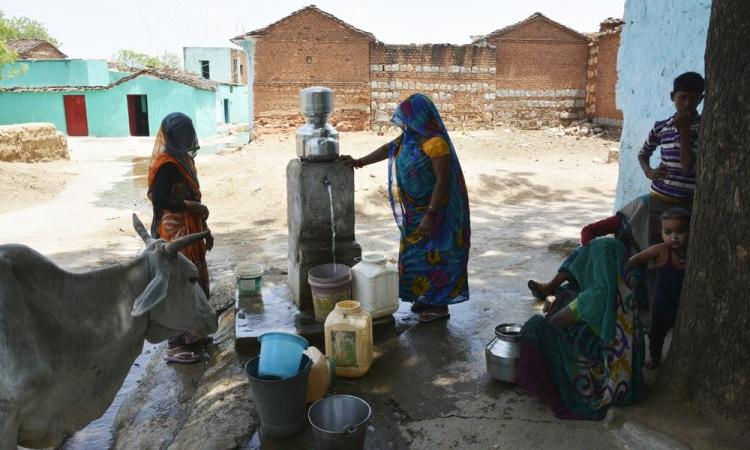
Government to spend Rs 3.5 trillion under Jal Jeevan Mission: PM Modi
In his first Independence Day address to the nation after the National Democratic Alliance (NDA) government came back to power, Prime Minister Narendra Modi flagged the growing water crisis in the country and said that around Rs. 3.5 trillion will be spent under the ambitious Jal Jeevan Mission aimed at providing potable water. Under the Mission, the government will focus on rainwater harvesting and water conservation in 256 districts in the first phase and carry out several other water conservation initiatives. Apart from this, he also highlighted India's burgeoning population, which is adding pressure to the country's natural resources. (Livemint)
Government explores sustainable cultivation to reduce farm water use
As large parts of the country routinely face a water crisis amid groundwater levels deplete at alarming rates, the Centre is exploring more sustainable methods of cultivation to reduce agricultural water use.
The proposals under consideration include making drip irrigation mandatory for sugarcane and paddy. Along with this, the government is likely to formulate policies to shift a major chunk of rice cultivation out of Punjab and Haryana to rain-surplus regions of the country.
The government also plans to bring fallow land under cultivation of water-intensive crops in the rain-surplus eastern and northeastern parts of the country, and at how farmers can be motivated to shift to solar-powered farms. (Hindustan Times)
Maharashtra government plans for Marathwada Water Grid
The Government of Maharashtra has come up with a plan to connect 11 major reservoirs in the Marathwada region to provide piped drinking water to every village household within three years. The project, worth Rs 16,000, envisages connecting the reservoirs from water surplus dams to areas serviced by reservoirs with low storage levels. The aim of the project is to provide water security and optimal use of available water in the region which has been reeling under a cyclical drought. For now, tenders for the project will be floated for two packages - one contract will cover Aurangabad-Jalna and the other will cover Beed. (The India Express)
Centre eases green rules for projects near buffer zones
In an office memorandum, the environment ministry has published new rules for environmental clearances of developmental activities in the buffer zone of protected areas.
As per the new rules, projects outside the boundary of the notified eco-sensitive zone (ESZ) of a sanctuary or national park but within a 10 kilometre radius of the park will not need prior clearance from the National Board for Wildlife (NBWL).
However, as per Kanchi Kohli, legal researcher, Centre for Policy Research, "the new rules completely defeat the purpose of recognising 10 kilometres around protected areas as areas that need to be recognised for their conservation value". Hindustan Times)
Gujarat, Madhya Pradesh spar over filling of Sardar Sarovar dam
The Government of Gujarat has urged the Narmada Control Authority (NCA) to double the speed of filling water in the Sardar Sarovar dam reservoir, wanting to fill the dam to a height of 138.64 meters. Water levels in the reservoir have already reached 132 meters as of Monday, submerging vast tracts of land in Madhya Pradesh and displacing thousands of people.
The move to hasten filling the dam further has naturally been opposed by the Madhya Pradesh government, that claims that the Gujarat government is yet to test the strength of the dam gates which were installed in 2017. (The Times of India)
This is a roundup of important policy matters from August 14 - 21, 2019. Also, read news this week.